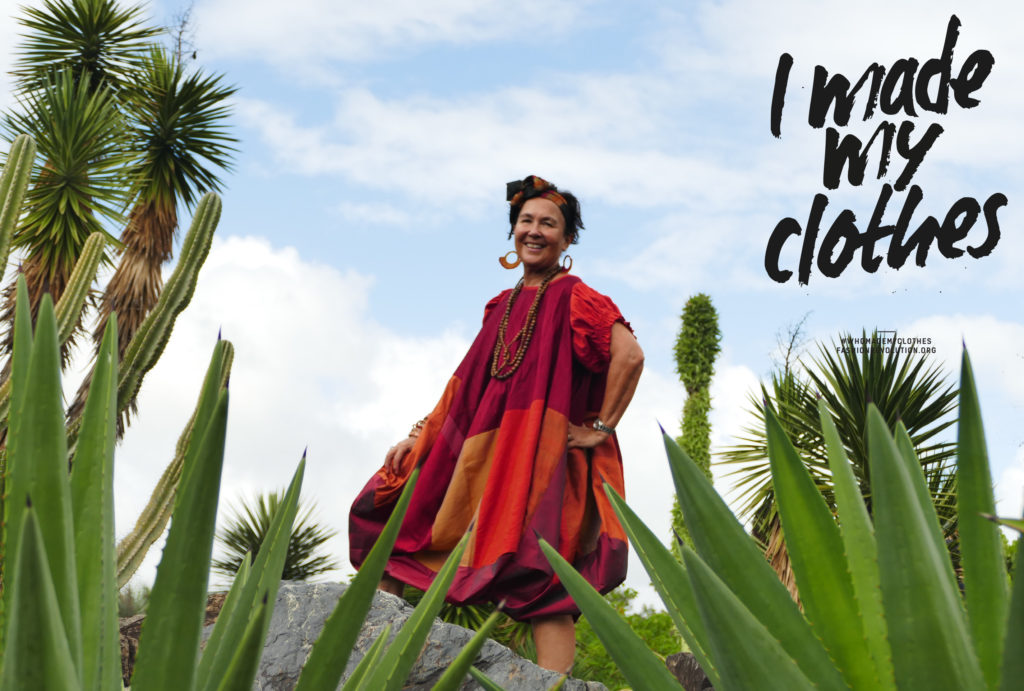What part are you playing in the Fashion Revolution? I am proud to have been on the Fashion Revolution Australia committee from the early days when the world awoke following the devastating Rana Plaza factory collapse in April 2013. Thousands killed, injured and orphaned in pursuit of profits and cheap clothes in distant comfortable countries like ours.
I created Textile Beat in 2013 based on a lifetime of making my own clothes so I could influence change by focusing on natural fibres (not plastic), upcycling (less waste) and making in your own style (storyful clothes). I often make my clothes from natural fibres reclaimed from garments that might otherwise become landfill. This one, above, (photographed by Robin McConchie at Mt Coot-tha Botanic Gardens) is silk from five garments that I recreated into two squares and a rectangle, with two small rectangles for sleeves. I used subtraction-cutting techniques pioneered by Julian Roberts to transform these pieces into a dress. The wooden beads were reclaimed from what was a family fruit bowl, silk head scarf from opshop and crochet earrings made at a recent workshop with Jenny King at Braiding in the Wildwood. Creative, disruptive, natural, indie style. That is how I choose to make a difference in the world and I explained why in my book Slow Clothing: finding meaning in what we wear.
As part of our recent fabulous three-day Fashion Revolution Brisbane event, one of several activities I ran was an upcycling masterclass with designer Darin Rose and 15 fabulous participants in the Fabrication Lab at The Edge, where we were sewing outside the lines. Here’s a video which Robin McConchie produced from the workshop.

